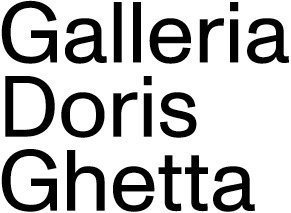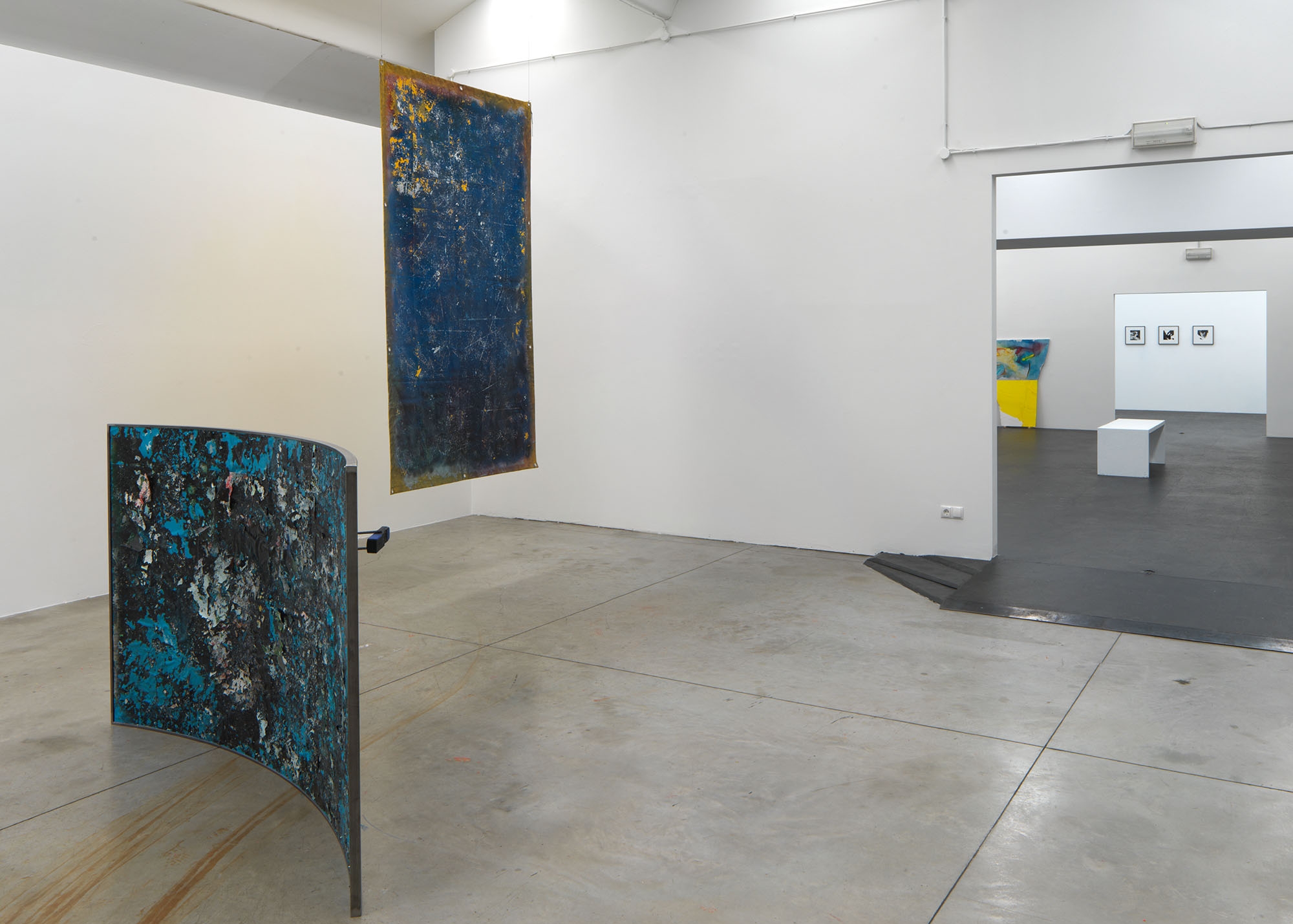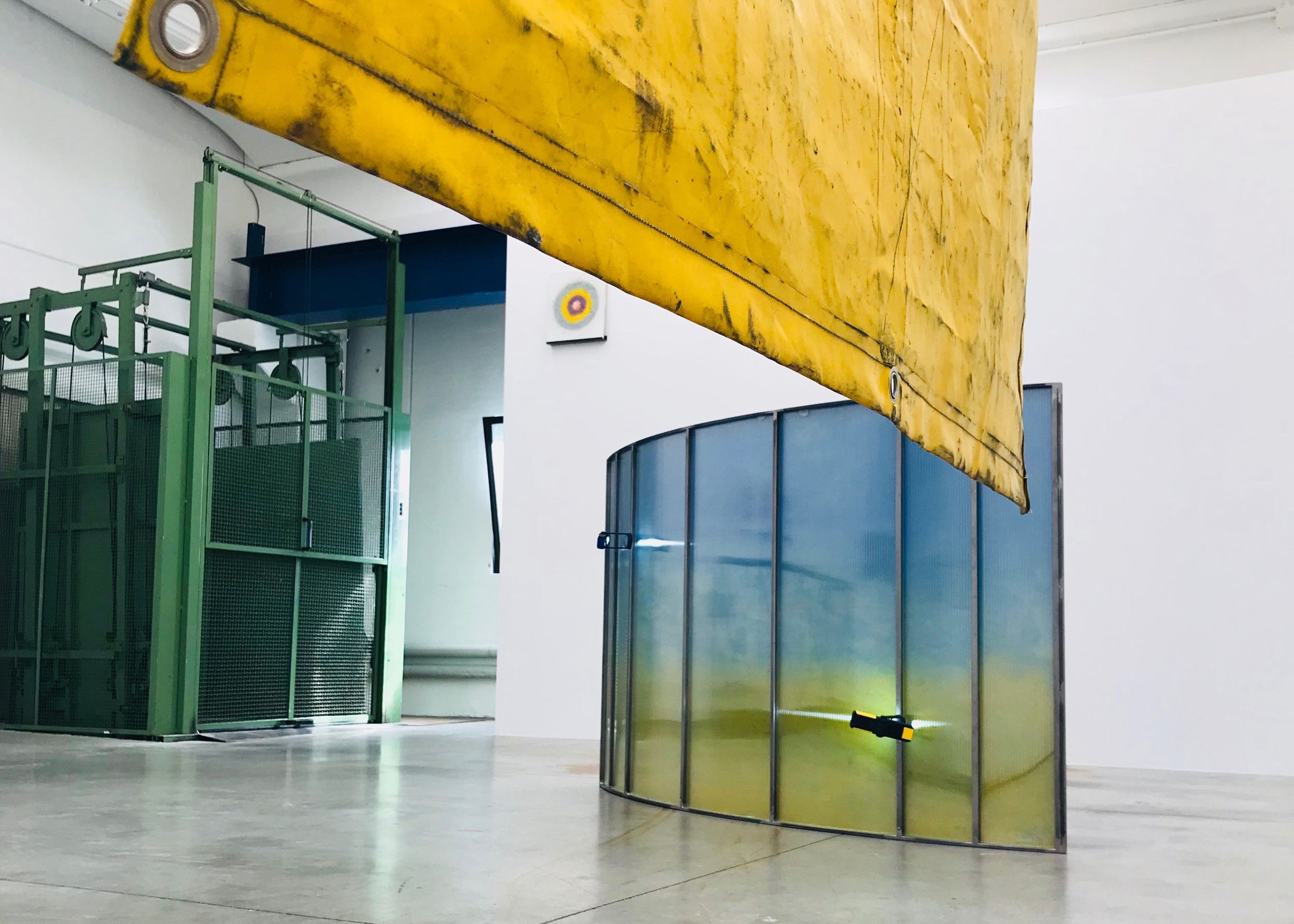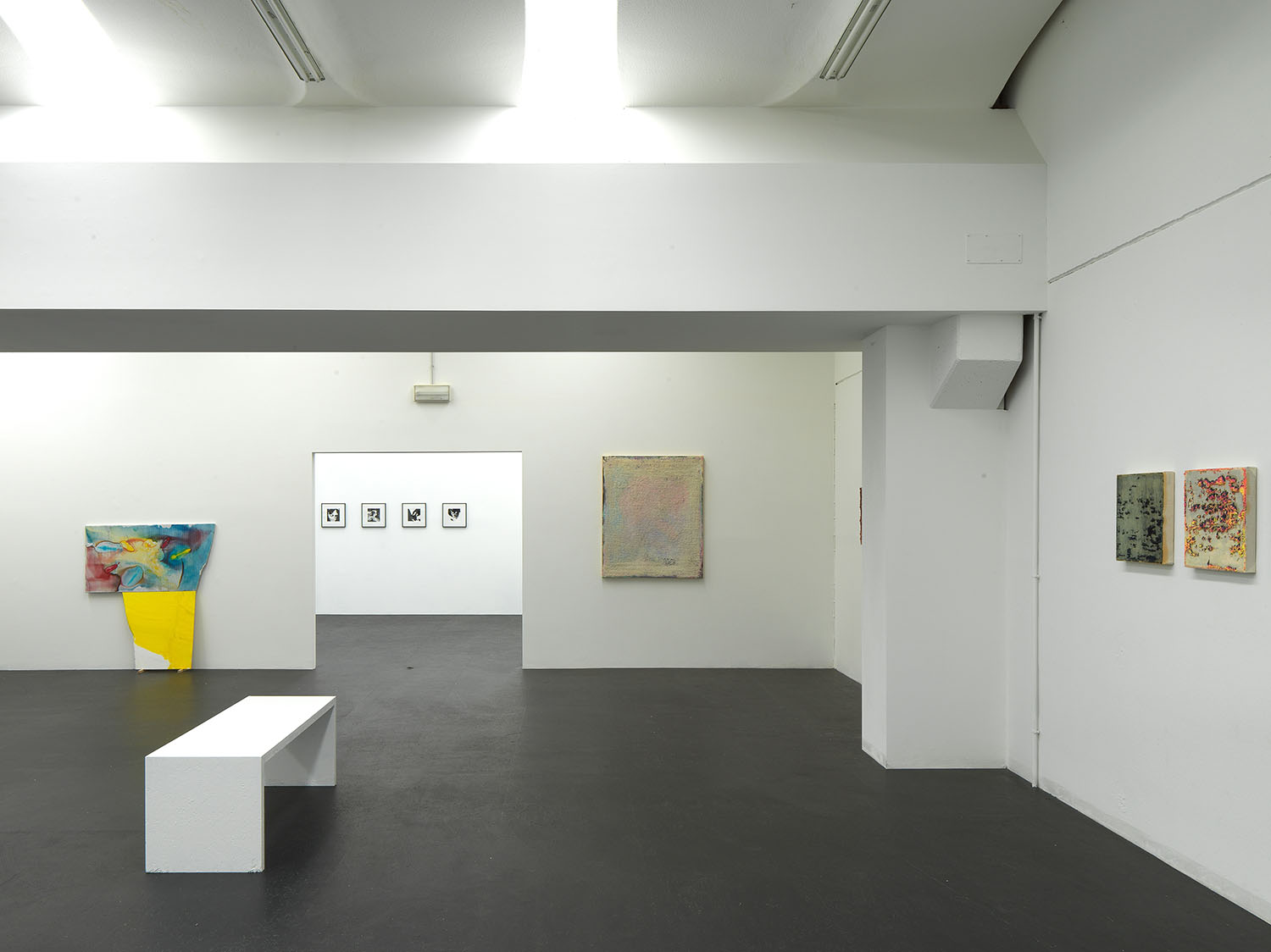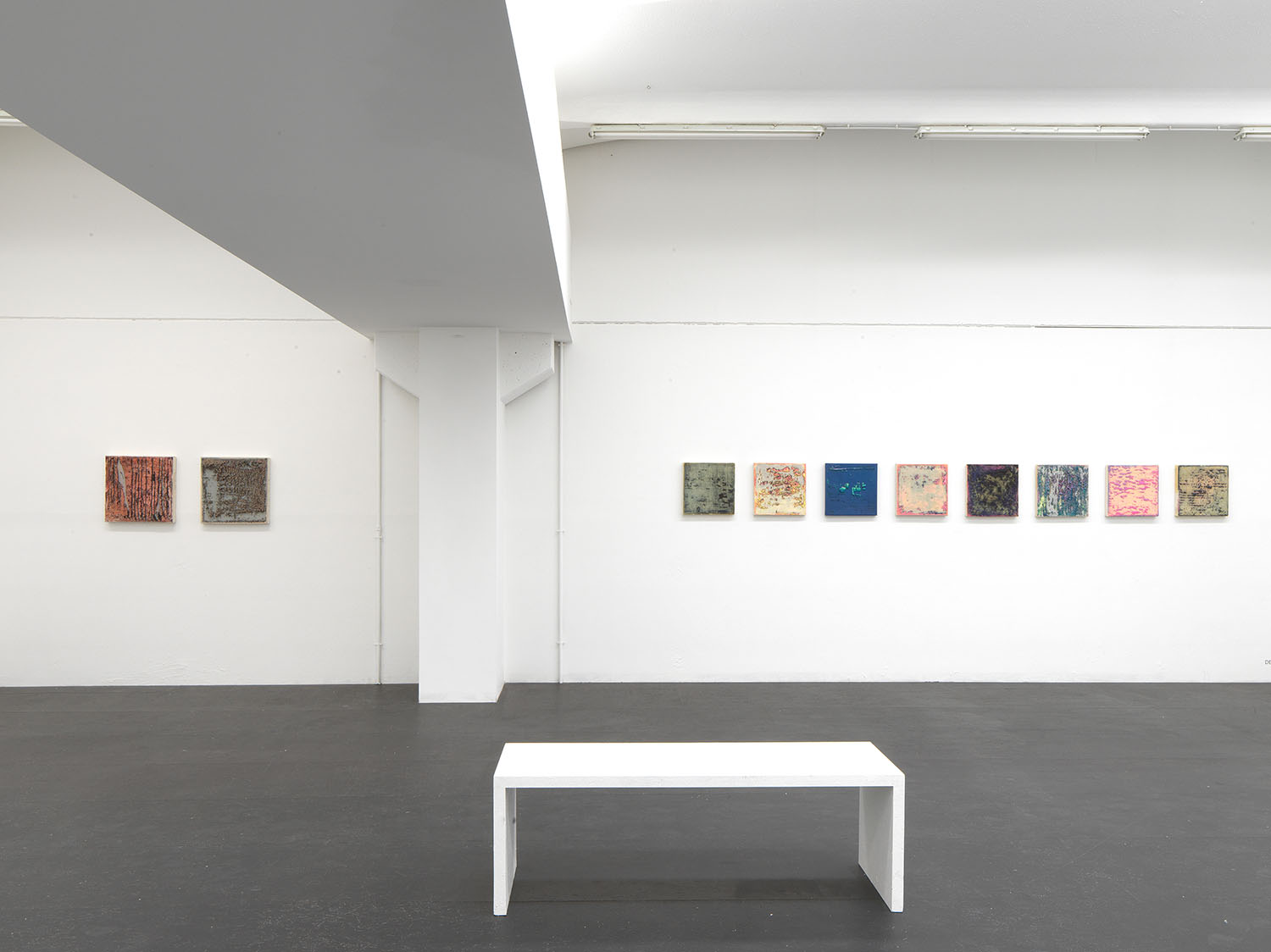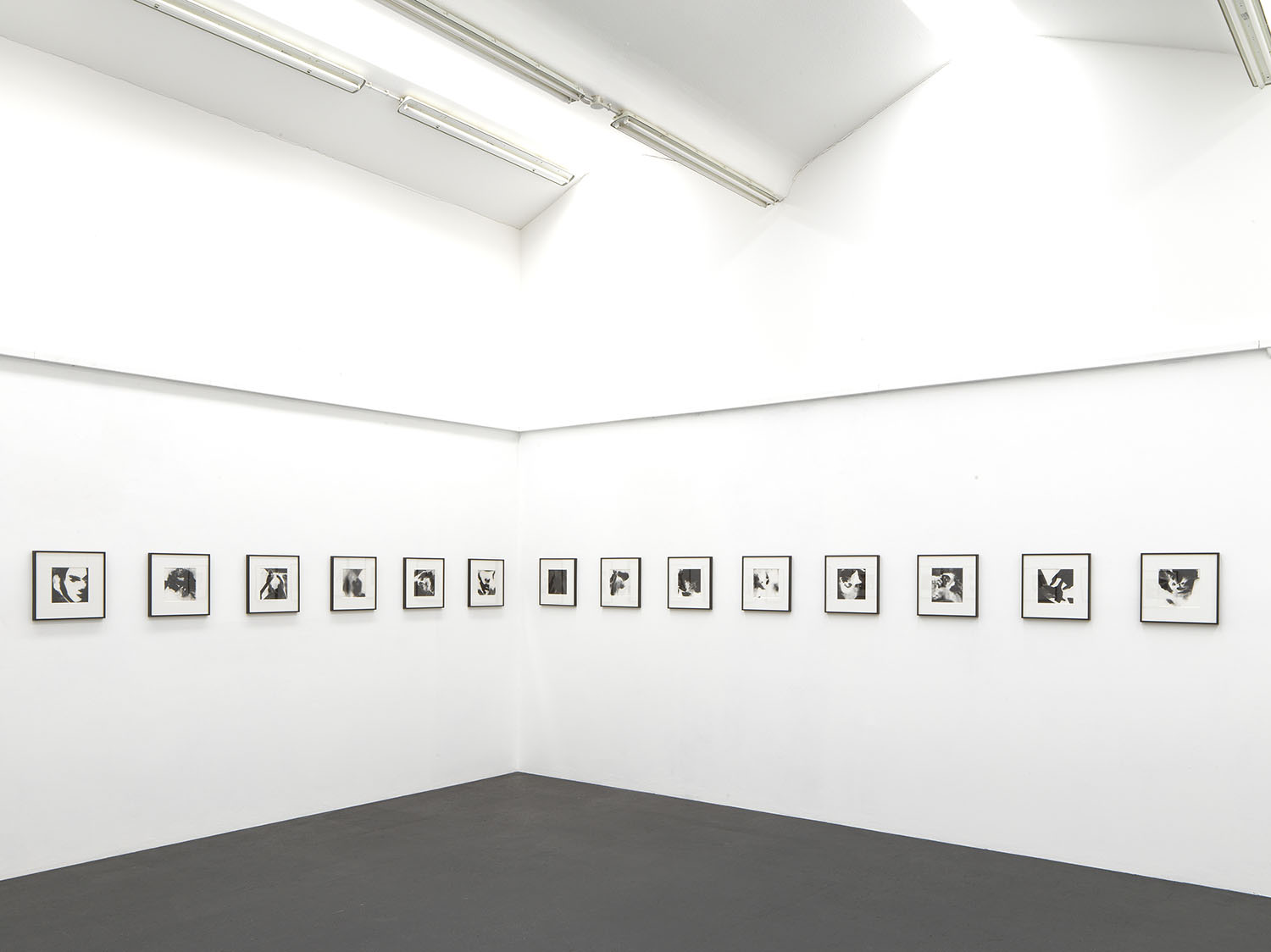AFFECTIVE EFFECTS
AFFECTIVE EFFECTS
Group Exhibition
artists: Dejan Dukic, Julia Frank, Philipp Messner, Martina Steckholzer
curated by Sabine Gamper
Vernissage, Tuesday 9th October 2018
October 10 - November 30 2018
Press release
comunicato stampa
Pressetext
The exhibition showcases the works of four artists in an exciting comparison of pictorial concepts such as materiality, corporeity and surface. The peculiarity of the artists’ different positions consists in an active interest for the physical processes of painting itself, in processual work on the surface of the picture or object, in the symbolic or iconic treatment of the ‘picture as body’. The artists concentrate on colour and pigment, seen as elements of matter and content that complete a painting’s surface, sometimes expanding it into the three-dimensional plane – penetrating its support or cutting loose from it and taking on a life of their own. Pigments and supports communicate layer by layer, combining to form a single painted object addressing the theme of its own independence. The materiality of colour is more or less tangible in the works presented here, but in some of them the supports and the pigments’ material properties become veritable tactile events.
This new interest for medium and corporeity in painting should be seen both in parallel with and in opposition to the extreme volatility of digital images that characterises our post-media age. It should be interpreted in terms of renewed attention to the significance of the corporeity of the support and the surface. It is interesting to note that the practice of all four artists is characterised by a broader concern with other techniques, thus transcending the boundaries of painting to encompass sculpture, performance, video and other artistic genres.
In his artistic practice, Dejan Dukic (born in Vienna in 1974) examines the significance of panel painting using material colour and its tactile presence as the main protagonists of his works. In this way, he addresses the different possibilities offered by the materiality of colour already used in the history of painting – from dripping to the thick application of colour to the dense, glossy oil painting – all techniques that emphasise a desire for tactility. Dejan Dukic insists on this point in particular, transforming the colour on the surface of the canvas into small objects independent of their sculptural characteristics. He does so by superimposing different layers of oil paint on the back of the canvas, allowing the colour to penetrate through the canvas itself and thus coagulate on the surface into long filaments that harden into delicate sculptural appendices. The artist uses stunning combinations of pop colours to give his works an extra and very marked perceptive effect and to offer the viewer an intense aesthetic experience. The particular tactile quality of these works places materiality and corporeity of the colour on the same plane as the essential theme of painting itself, at the same time addressing that of mannerism.
In her works, Julia Frank (born in Glorenza in 1988) is concerned with the different physical properties of painting materials and surfaces, and with how they are reflected on the human body. On show here are works from two different series: ‘Untitled 88’ from the ‘Maps’ series (2017), a large-scale banner, composed of overlaid strips of plastic film and various layers of colour, in which the artist investigates possibilities of shaping matter with gas and her own body weight, and tests new methods of pictorial production. Objectivity, materiality and the human body’s performative act in the creation of the work enable the artist to experiment with painting as an extended medium, developing concepts such as movement, mutability and perception, and finding connections between painting technique and some of the other techniques used in contemporary art.
A second series entitled ‘Waiting for the....’ (2018) is made up of white and grey cement slabs with coloured concentric circles sprayed on the surface. Conceived as performative objects, they are not only bodies evoking matter and sound but are also a way of celebrating the pictorial surface.
In his most recent work, Philipp Messner (* 1975 in Bolzano) applies pigment inks based on the CMYK color scheme to irregularly broken slabs of marble, causing the color not to remain on the surface, but infiltrate the porous rock layer by layer. This approach is at the same time pictorial as well as sculptural, since the artist uses both color and marble as working materials. They merge in their different properties and form a new visual result. Philipp Messner evokes strong historical references, which he questions at the same time: the use marble as one of the essential materials of classical sculpture in its raw form, covered in vibrant, psychedelic color compositions reminiscent of watercolors or silk paintings. Philipp Messner's color objects blur the boundaries between object and image, sculpture and painting, corporeality and surface, between analog and digital pictorial tradition.
In her most recent works, Martina Steckholzer (born in Vipiteno in 1974) explores the technique of watercolour. In these ‘Black Watercolours’ she celebrates the caducity of the act of painting on the one hand, and the pure physicality of the material used on the other. This type of painting is born of the meeting between the black of coal – a concentrated, direct, tactile pigment – with water, paintbrush and paper. Also present here as in her previous series are her actual, largely unexpected encounters with the time and space of contemporary art, dance and theatre – real moments of experience with bodies, movements, people and objects in space – from which she draws inspiration for her works. These moments coagulate in the pictures into marks which, like traces of a vital presence, evoke the artist’s own life experiences. Here for the first time, in addition to her pictures, Martina Steckholzer also exhibits concise, condense texts that refer to the emotions and contents of these personal memories. In this dual stratification, her works remind us that painting and poetry have a lot to do with each other, but also of how closely the affective power of the former is connected with the highly personal materiality of her brushstrokes.
Sabine Gamper
